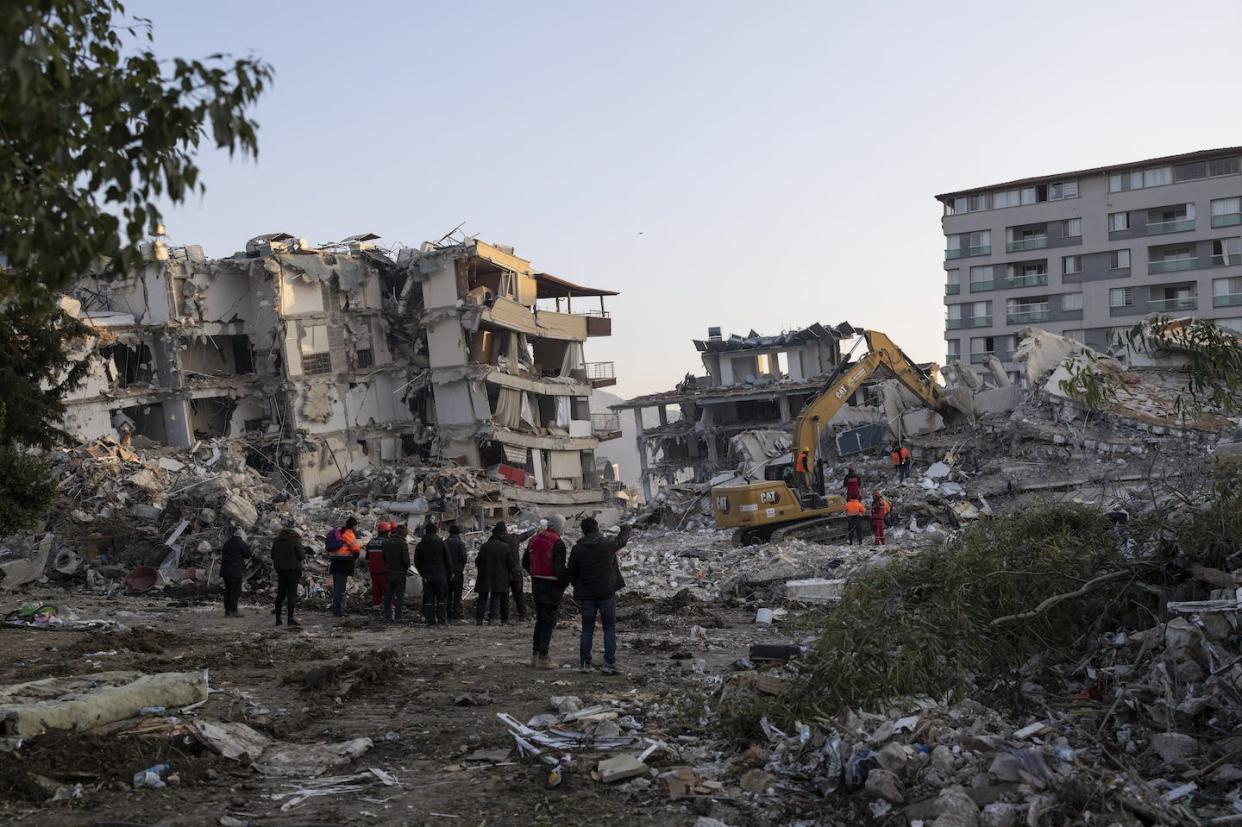Turkey and Syria earthquake: Long-term funding is needed to support search-and-rescue after major disasters

The strong and disastrous earthquake that shook southern Turkey and Syria on Feb. 6 drew attention to search-and-rescue (SAR) operations. The media’s attention raised familiar questions around SAR, including who conducts SAR, what formal and informal SAR teams are available, and how long trapped people are able to survive before being rescued.
Over the past 50 years, many studies have been conducted to address these questions.
I have been researching and examining earthquakes, building codes, urban planning and emergency operations since 1990, after experiencing the Manjil-Roudbar earthquake in Iran. Just after midnight on June 21, I was woken up by the magnitude 7.6 earthquake. More than 40,000 people lost their lives and over 300,000 were injured.
The last option for saving lives
Referring to an earthquake as a “killer earthquake” ignores the harsh reality that the buildings killed people. Until having an effective earthquake early warning, we need to rely on building codes and urban and physical planning. However, most cities and villages in earthquake-prone areas either do not have or are unable to fully implement seismic codes to prevent construction in high hazard zones and enforce building codes.
If a strong earthquake occurs in a region where buildings aren’t constructed to withstand the impact, the only hope for people trapped would be timely, effective and equipped SAR operations.
Search-and-rescue is the last option when it comes to saving lives after a disaster. Most SAR efforts are carried out by local people and SAR teams.
Urbanization and earthquakes
Rapid urbanization, vertical development and heavy building materials, make it very difficult for untrained and unequipped survivors to locate and extract trapped people from complex and hazardous piles of debris. The need for trained and equipped SAR teams in urban areas has long been established.

Many countries have created urban search-and-rescue teams, like Canada’s Heavy Urban Search and Rescue Teams or Task Forces.
There is a clear positive correlation between the number of buildings collapsed and the number of people killed in the earthquakes. In strong earthquakes (measuring more than seven on the moment magnitude scale) in high-density urban areas, up to 70 per cent of the collapsed buildings’ occupants become trapped under debris.
After the earthquake, SAR operations race against time because the chances of survival for people trapped under the collapsed buildings fades away rapidly.
Fade-away time — the length of time between the disaster event and a trapped individual’s chances for survival reaching zero varies depending on multiple factors including age, level of injury, weather conditions and the situation of the victim. For example, for a person with major blood loss, the average maximum chance for survival is almost two days, compared with an average maximum of 6.8 days for someone who is uninjured.
Complicated rescues
Rescuing individuals from high-rise multistory buildings is much more complicated and as such, the role of heavy SAR teams becomes critical. In low-density urban or rural areas, the majority of trapped individuals can be rescued within two days without using sophisticated tools, however, this is not the case in multistory buildings.
The 1995 Mexico City earthquake, the 1995 Kobe earthquake and the 2010 Haiti earthquake are prime examples of such complex situations and search and rescue operations.
SAR operations become much more complex if earthquakes occur overnight, because the occupancy rates of the buildings are usually at their highest level and more people are inside the collapsed buildings, such as the timing of the recent earthquakes in Turkey and Syria.
Relying on international SAR teams for the critical hours of search and rescue is not very realistic. Despite the creation of coordinated bodies such as the United Nations International SAR Advisory Group, these teams arrive at the impacted areas too late.
During the 2010 Haiti and 2015 Nepal earthquakes, about 53 international teams arrived in these countries — most arrived after three days. In Haiti, 132 people were rescued by the 52 international SAR teams with 1,820 personnel.
Investing in search-and-rescue capacity
Putting all these past experiences, evidence and realities together, the bottom line is that earthquake-prone countries — including Canada — need to build capacity and invest in local and national SAR teams to be able to conduct effective and timely search and rescue during the first two days after the event.
Nonetheless, this must be established in conjunction with ensuring new buildings are constructed according to codes and existing buildings are retrofitted as much as possible to minimize the impact of earthquakes.
These are long-term and continued investments that would save many lives in the rare instances of their deployment. The challenge lies in that such long-term investments are not very attractive to those in decision-making positions. Long-term emergency plans require funding, capacity building and investment in search-and-rescue resources.
This article is republished from The Conversation, an independent nonprofit news site dedicated to sharing ideas from academic experts. If you found it interesting, you could subscribe to our weekly newsletter.
It was written by: Ali Asgary, York University, Canada.
Read more:
Ali Asgary does not work for, consult, own shares in or receive funding from any company or organisation that would benefit from this article, and has disclosed no relevant affiliations beyond their academic appointment.


